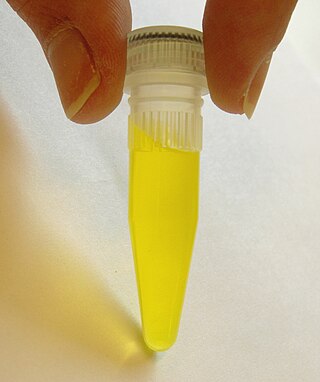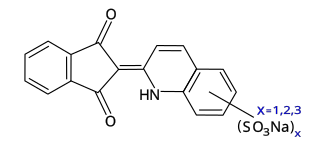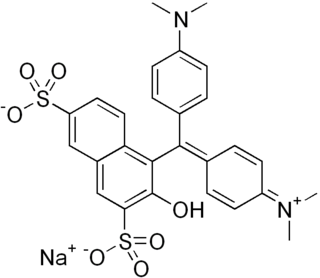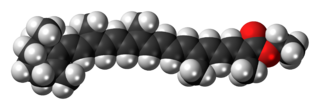The International Numbering System for Food Additives (INS) is a European-based naming system for food additives, aimed at providing a short designation of what may be a lengthy actual name. It is defined by Codex Alimentarius, the international food standards organisation of the World Health Organization (WHO) and Food and Agriculture Organization (FAO) of the United Nations (UN). The information is published in the document Class Names and the International Numbering System for Food Additives, first published in 1989, with revisions in 2008 and 2011. The INS is an open list, "subject to the inclusion of additional additives or removal of existing ones on an ongoing basis".

E numbers, short for Europe numbers, are codes for substances used as food additives, including those found naturally in many foods such as vitamin C, for use within the European Union (EU) and European Free Trade Association (EFTA). Commonly found on food labels, their safety assessment and approval are the responsibility of the European Food Safety Authority (EFSA). The fact that an additive has an E number implies that its use was at one time permitted in products for sale in the European Single Market; some of these additives are no longer allowed today.

Food coloring, or color additive, is any dye, pigment, or substance that imparts color when it is added to food or drink. They can be supplied as liquids, powders, gels, or pastes. Food coloring is used in both commercial food production and domestic cooking. Food colorants are also used in a variety of non-food applications, including cosmetics, pharmaceuticals, home craft projects, and medical devices. Colorings may be natural or artificial/synthetic.

Quinoline Yellow WS is a mixture of organic compounds derived from the dye Quinoline Yellow SS. Owing to the presence of sulfonate groups, the WS dyes are water-soluble (WS). It is a mixture of disulfonates (principally), monosulfonates and trisulfonates of 2-(2-quinolyl)indan-1,3-dione with a maximum absorption wavelength of 416 nm.p. 119

Sunset yellow FCF is a petroleum-derived orange azo dye with a pH dependent maximum absorption at about 480 nm at pH 1 and 443 nm at pH 13 with a shoulder at 500 nm. When added to foods sold in the United States it is known as FD&C Yellow 6; when sold in Europe, it is denoted by E Number E110.

Canthaxanthin is a keto-carotenoid pigment widely distributed in nature. Carotenoids belong to a larger class of phytochemicals known as terpenoids. The chemical formula of canthaxanthin is C40H52O2. It was first isolated in edible mushrooms. It has also been found in green algae, bacteria, crustaceans, and bioaccumulates in fish such as carp, golden grey mullet, seabream and trush wrasse.

Sodium propanoate or sodium propionate is the sodium salt of propionic acid which has the chemical formula Na(C2H5COO). This white crystalline solid is deliquescent in moist air.

Cassia gum is the flour and food additives made from the endosperms of the seeds of Senna obtusifolia and Senna tora. It is composed of at least 75% polysaccharide, primarily galactomannan with a mannose:galactose ratio of 5:1, resulting in a high molecular mass of 200,000-300,000 Da.

A packaging gas is used to pack sensitive materials such as food into a modified atmosphere environment. The gas used is usually inert, or of a nature that protects the integrity of the packaged goods, inhibiting unwanted chemical reactions such as food spoilage or oxidation. Some may also serve as a propellant for aerosol sprays like cans of whipped cream. For packaging food, the use of various gases is approved by regulatory organisations.

Allura Red AC is a red azo dye that goes by several names, including FD&C Red 40. It is used as a food dye and has the E number E129.

Red 2G is a synthetic red azo dye. It is soluble in water and slightly soluble in glycerol. It usually comes as a disodium salt of 8-acetamido-1-hydroxy-2-phenylazonaphthalene-3,6 disulfonate.

Green S is a green synthetic coal tar triarylmethane dye with the molecular formula C27H25N2O7S2Na.

Ascorbyl palmitate is an ester formed from ascorbic acid and palmitic acid creating a fat-soluble form of vitamin C. In addition to its use as a source of vitamin C, it is also used as an antioxidant food additive. It is approved for use as a food additive in the EU, the U.S., Canada, Australia, and New Zealand.

Calcium ascorbate is a compound with the molecular formula CaC12H14O12. It is the calcium salt of ascorbic acid, one of the mineral ascorbates. It is approximately 10% calcium by mass.

Sodium ascorbate is one of a number of mineral salts of ascorbic acid (vitamin C). The molecular formula of this chemical compound is C6H7NaO6. As the sodium salt of ascorbic acid, it is known as a mineral ascorbate. It has not been demonstrated to be more bioavailable than any other form of vitamin C supplement.

Sodium malate is a compound with formula Na2(C2H4O(COO)2). It is the sodium salt of malic acid. As a food additive, it has the E number E350.

Flavoxanthin is a natural xanthophyll pigment with a golden-yellow color found in small quantities in a variety of plants. As a food additive it used under the E number E161a as a food coloring although it is not approved for use in the EU or USA. It is listed as food additive 161a in Australia and New Zealand where it is approved for usage as an ingredient in food products.
Rubixanthin, or natural yellow 27, is a natural xanthophyll pigment with a red-orange color found in rose hips. As a food additive it used under the E number E161d as a food coloring; it is not approved for use in the USA or EU but is approved in Australia and New Zealand where it is listed as 161d.
Rhodoxanthin is a xanthophyll pigment with a purple color that is found in small quantities in a variety of plants including Taxus baccata and Lonicera morrowii. It is also found in the feathers of some birds. As a food additive it is used under the E number E161f as a food coloring. It is not approved for use in the EU or US; however, it is approved in Australia and New Zealand.

Food orange 7, the ethyl ester of beta-apo-8'-carotenic acid, is a carotenoid with an orange-red color. It is found in small quantities in some plants, but is often produced commercially from apocarotenal (E160e). It is used as a food coloring under the E number E160f and is approved for use in the EU and Australia and New Zealand where it is listed as food additive 160f; it is banned in the United States.

















